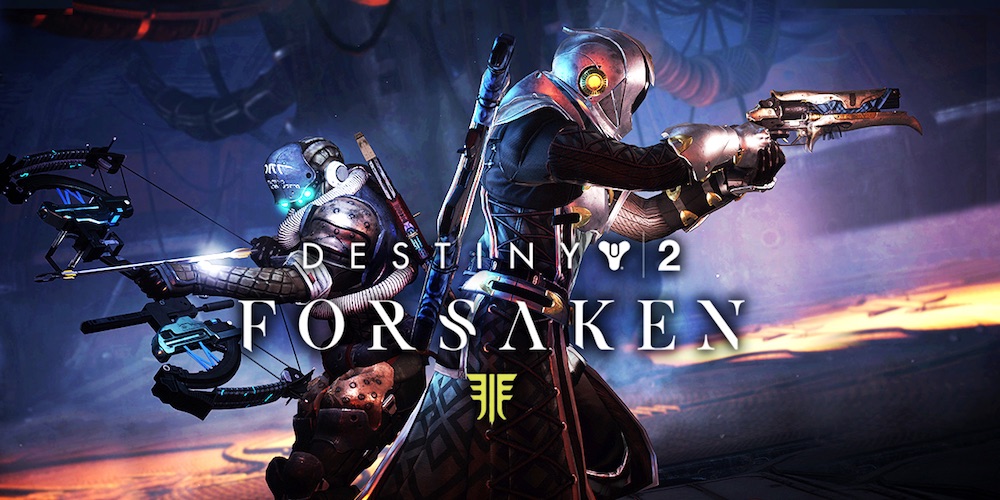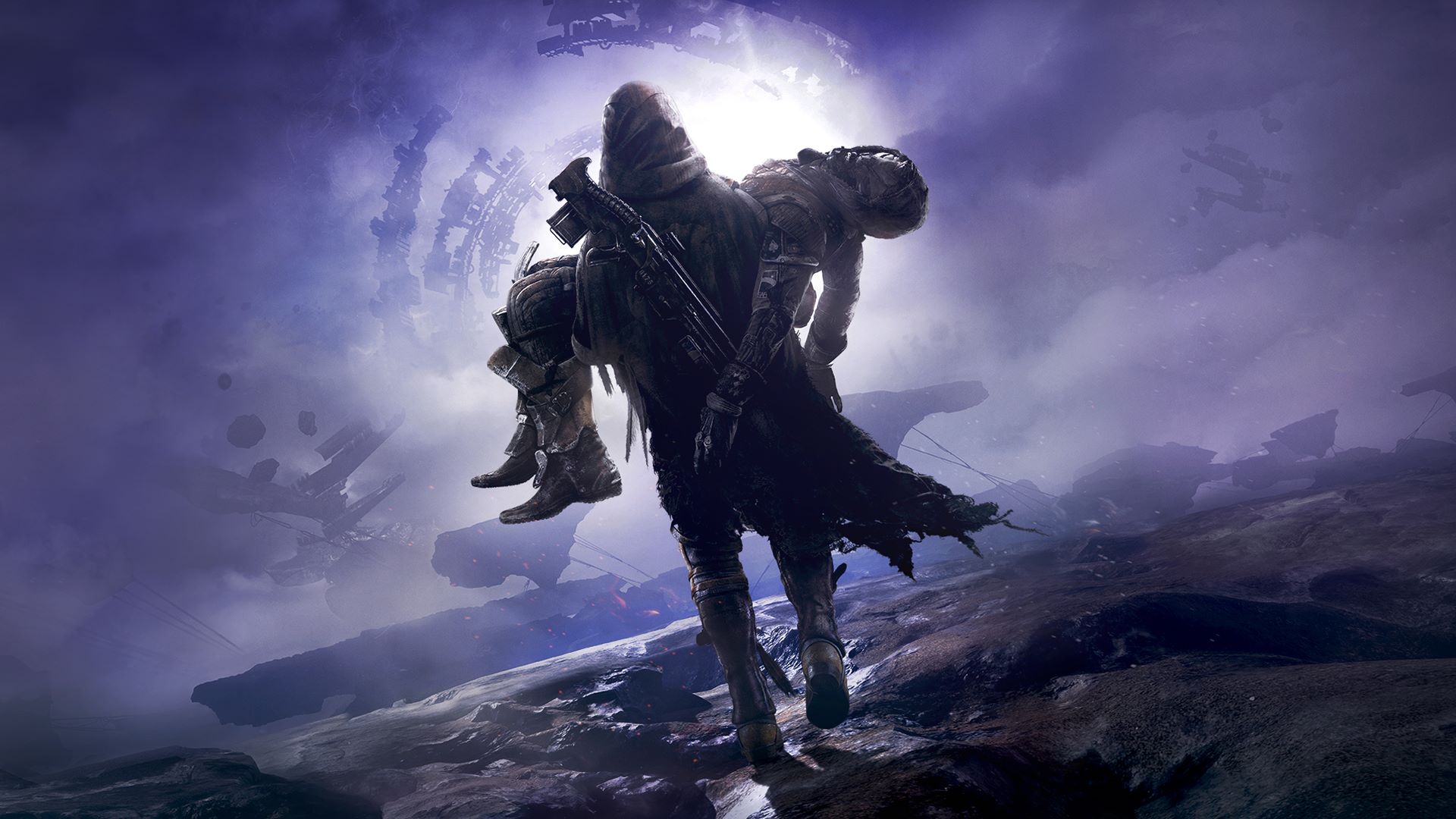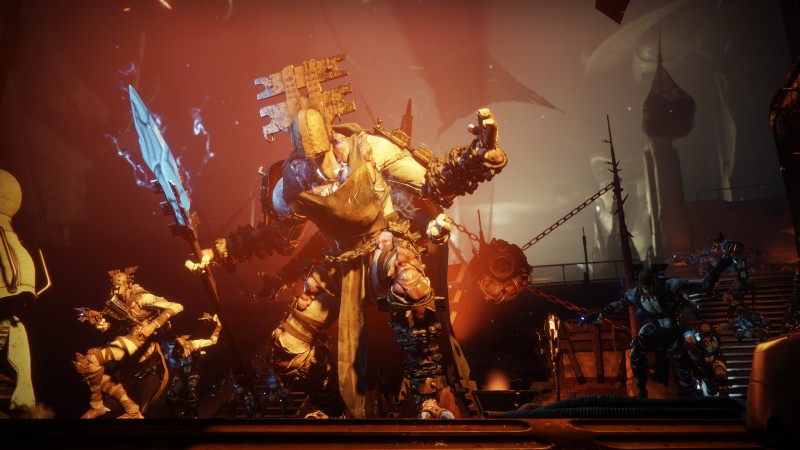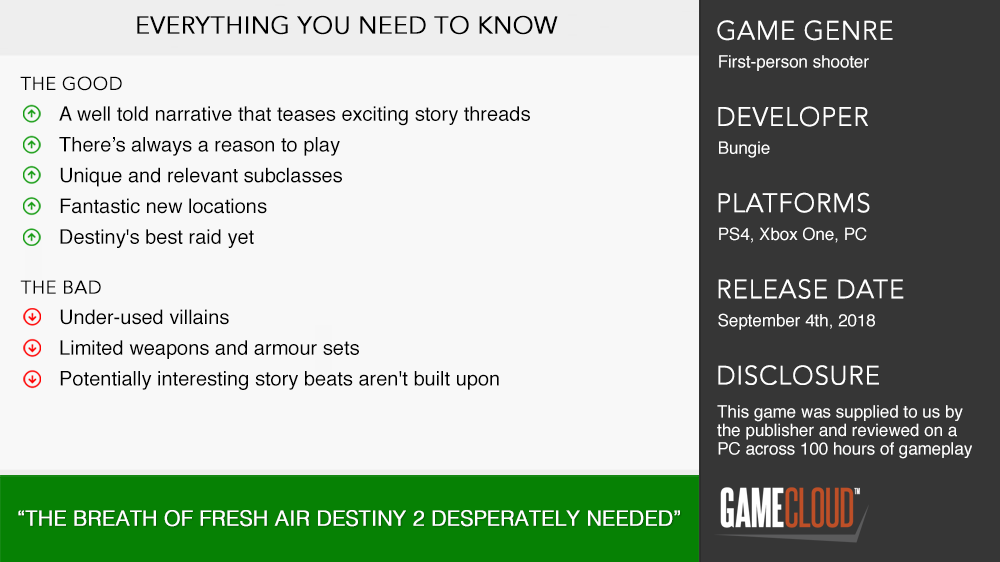
There’s no denying that Destiny 2’s post-launch support hasn’t been the best. Lacklustre expansions, casualisation, and trying to keep the game in a beginner friendly state led it down a path longtime fans weren’t comfortable with, myself included. Destiny 2 was in dire need of a saving grace, and the reveal of Forsaken was Bungie’s answer to that. Bold narrative choices, a slew of new content, sandbox changes, and a new direction had fans cautiously optimistic for the next chapter of the shared-world shooter.
I don’t think anyone could’ve guessed Forsaken’s most significant plot point before it was revealed, the death of Cayde-6. This makes two things clear from the start; that Bungie isn’t messing around, and that they’re going for a drastically different narrative tone this time around. The formalities of war and warring races is replaced by lawlessness and revenge and has Forsaken feeling unique. While the narrative takes a back seat after the initial missions, Bungie still manages to nail environmental storytelling, and it all caps off with a twist that few would’ve seen coming. The story is still unfolding, with new missions being added each week, but what has been done teases some excellent threads for future story arcs.

Where Forsaken’s narrative misses the mark is with the opportunities it doesn’t take. It seems to want to set up a morally grey situation for the Vanguard, and while the idea is played with, it’s never adequately capitalised on in a meaningful way. Uldren Sov as the main antagonist is quite underwhelming, too. Aside from minimal screen time, his motivations are never explained until the finale, and the heavily marketed Barons are little more than targets on a checklist.
The way the campaign is tackled is somewhat underwhelming also. There was much emphasis placed on hunting the 8 Barons in whichever order you want, but in actuality, they all vary in recommended power levels. Some will be significantly easier than others if you choose to hunt that particular Baron first, and that’s without mentioning that 2 of them are locked behind story missions until the other six are killed. Thankfully, each fight is unique, featuring different mechanics, settings and fighting styles. It keeps the main story from becoming a mindless affair of running and gunning.

The endgame grind has been vastly improved, taking what made Destiny’s endgame so great, and improving on it in meaningful ways. Weekly and daily objectives reward you with powerful gear, which always makes you feel like you’re inching to that next Power Level. The sheer amount of stuff to do ensures there are hours of content each week, and that’s without jumping into the new mode, Gambit. I wouldn’t say I like PvP, but Gambit is one of my favourite game modes that Destiny has ever come up with. The beautiful melding of PvE and PvP combat keeps it feeling fresh, fun, and as if each match is a new experience.
The new gear to acquire is a bit of a mixed bag. While weapon pools and armour sets seem quite limited, exotic items earn their title. Aside from being significantly harder to find, Bungie did not hold back when it came to making these rare drops feel powerful. It’s a wonderful sense of satisfaction when they rarely drop and makes them feel far more valuable. The new bow weapon type is just as viable as any other class of weapon Bungie has designed, with responsive shooting, brilliant sound design, and quirks that make them worth using over other guns. The return of random-rolls reinforces the idea of Destiny being a power fantasy again, and it feels great to finally get that god-roll you’ve been grinding for.

The nine new subclasses all feel intricately designed, and create meaningful new ways to play while keeping old subclasses relevant. Each brings something new to the table in different ways, with unique strengths and purposes that lead to each feeling like they have a place within the meta. The new patrol areas are just as exciting and innovative. The Tangled Shore feels like a lawless frontier where Fallen and Scorn run rampant, while the Dreaming City is a beautifully designed end game counter-part, rich with lore, secrets, and new changes each week. The new enemy race feels like more than just a reskin of the Fallen. They’re far more savage, and require different tactics to bring down, making them feel like a worth while addition to the numerous factions of adversaries.
The biggest problem I had with Destiny 2’s first two raid activities were the lack of difficulty. The second raid lair, Spire of Stars emphasises what Bungie is capable of when they want to create challenging and mechanically complex encounters. I don’t think anything could’ve prepared anyone for Forsaken’s raid, Last Wish. It nails every aspect of what makes a Destiny raid great; a steady difficulty curve, mechanically complex encounters, and is an essential addition to the lore and story. It cracked the longest time for world’s first completion by four hours, and only 12 people finished it within the first day of launch. It’s excellently designed, and new content opening up upon the first completion was a pleasant surprise.

I applaud Bungie for taking risks with Forsaken, because most of them work well. Destiny 2 was in desperate need of new content, engaging content, content that would provide incentive to keep coming back. An expansion that would please hardcore players while still alluring new players into the ever satisfying trap of grinding for loot, and Forsaken is exactly that. It builds on everything that made the complete form of Destiny so great, and implements it into the sequel with new meaningful additions that feel innovative, entertaining, and rewarding. I’m extremely eager to see how they build on the Dreaming City and future content drops. If you’re a newcomer or a returning player who was turned off by the prominent casualisation in the first year of Destiny 2’s launch, there’s never been a better time to jump in.











